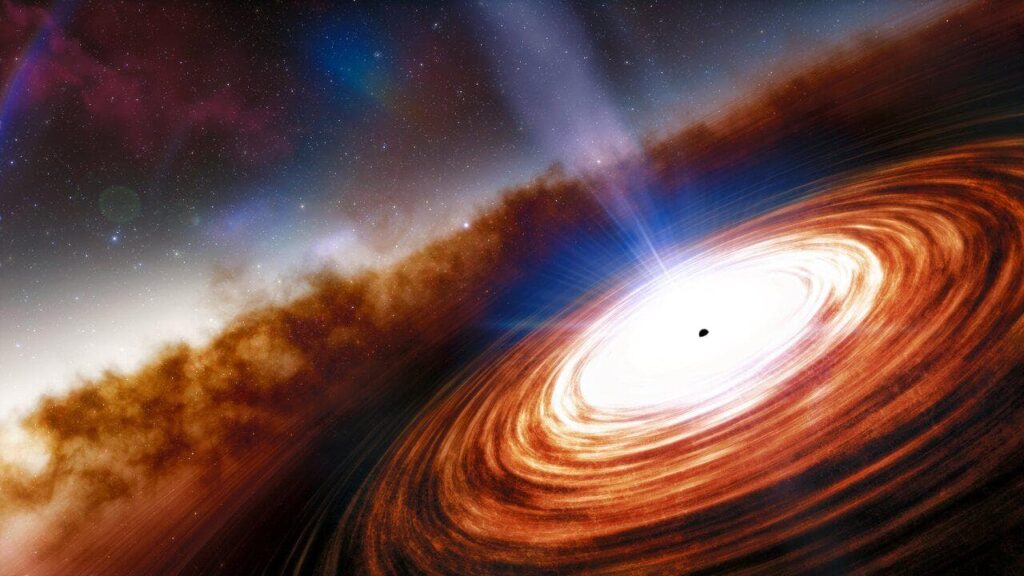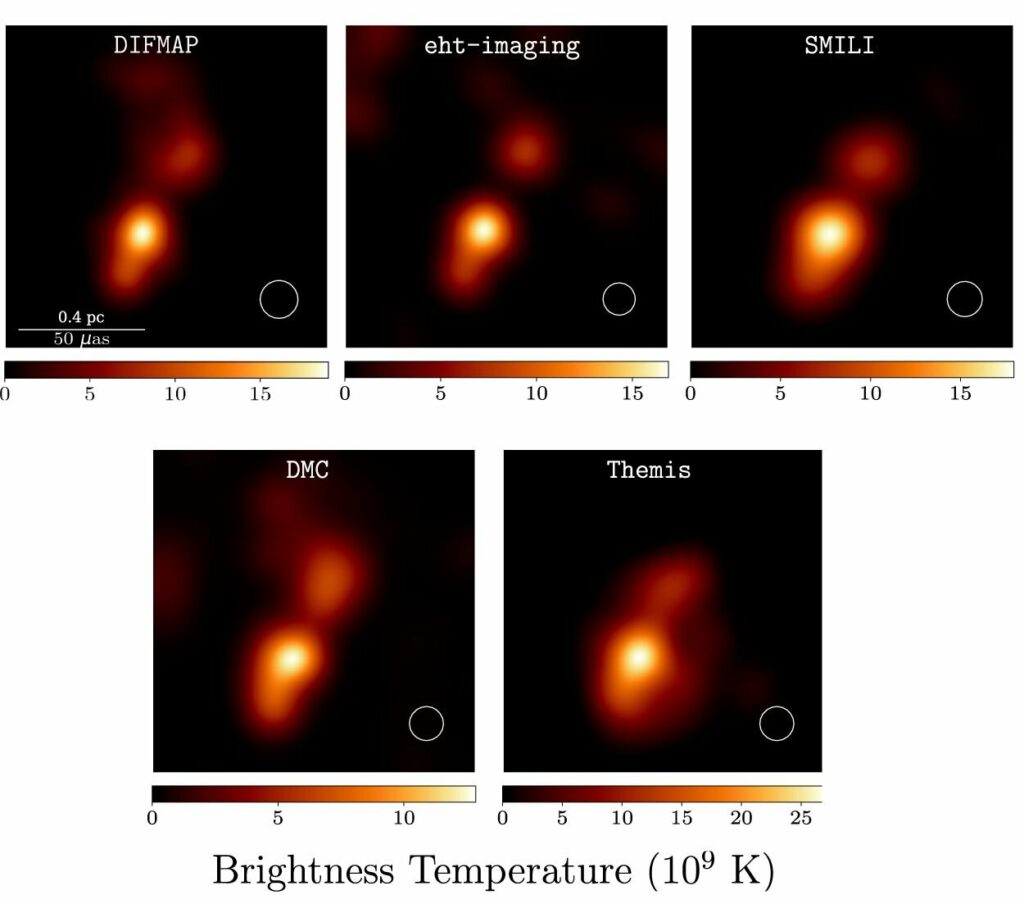An international team of researchers used the Virtual Event Horizon Telescope (ЕHT) to study the quasar NRAO 530. They managed to get an image of its internal structure with unprecedented resolution.
What are quasars?
Quasars are among the brightest objects in the Universe. It is believed that these are active galactic cores, in the center of which are supermassive black holes. They absorb a large amount of matter, which is why massive accretion disks have formed around them. Part of their matter is ejected into the surrounding space in the form of jets — streams of particles moving at relativistic speeds. Disks and jets are powerful sources of radiation, which is why quasars are often called beacons of the Universe.

Scientists have been trying to understand the complex physics of these space monsters for a long time, especially how exactly jets are created and powered, and what is the role of magnetic fields in their formation. For this, they used the EHT, a network of radio telescopes located in different parts of the globe. Thanks to the use of Very Long Baseline Interferometry (VLBI), astronomers can synchronize antennas and create a virtual analogue of a single telescope with an aperture comparable to the diameter of our planet.
Event Horizon Telescope Images
The target of the observations was NRAO 530. It is classified as an optically active variable quasar. The light it emitted took 7.5 billion years to reach Earth.

The EHT images obtained show a bright region located at the southern end of the quasar jet. The core of NRAO 530 has a substructure consisting of two components, which is visible only in short-wave radiation. The jet of the quasar extends in projections on the plane of the sky for a distance that light travels in about 1.7 years. The researchers noted two features: orthogonal polarization is observed in parallel and perpendicular directions with respect to the jet. This indicates a well-ordered magnetic field in the jet. According to the researchers, it has a helical structure.

Astrophysicists believe that further observations of the quasar will help to understand how the characteristics of its jets change over time and their connection with the production of high-energy photons.
Recall that in 2022 EHT took the first ever image of a black hole in the center of the Milky Way.
According to http://eventhorizontelescope.org
Follow us on Twitter to get the most interesting space news in time
https://twitter.com/ust_magazine

